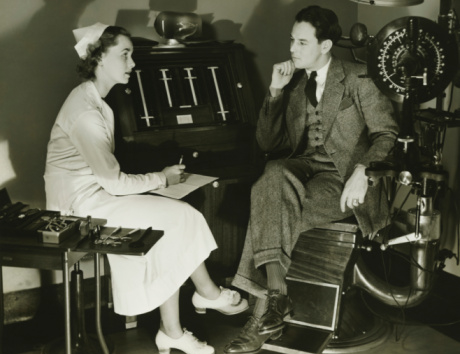Costs of a Hysterectomy in 1944 versus Now
My wife recently rummaged through family keepsakes and found bills for an emergency hysterectomy that her grandmother had in 1944, at St. Francis Hospital in Olean, NY, in the northwestern part of the state. She was transported 20 miles by ambulance from her rural home outside of Bradford, PA.
Below, in rounded numbers, is what she was charged for the ambulance, the hospital stay, the operating room, the anesthetic, six transfusions, and drugs. A bill for the surgeon was not included, and one could not be found among the old bills.
| Cost in
1944 Dollars |
Cost in
2022 Dollars |
|
| Ambulance | $20 | $326 |
| 32 Days Hospital | $178 | $2,907 |
| 6 Transfusions | $120 | $1,960 |
| Operating Room | $15 | $245 |
| Anesthetic | $10 | $163 |
| Drugs | $15 | $236 |
| Total | $358 | $5,837 |
Given that she was hospitalized for 32 days, there must have been complications. It’s not known what kind of hysterectomy she had, but I’ll assume for the purposes of this commentary that it was an abdominal hysterectomy, which is the most complicated kind.
I was struck by how short and easily understandable the bills were: no copays, no deductibles, no insurance gibberish, no hidden charges, no cost-shifting from those with insurance to those without. The final bill consisted of several entries on a four-inch by six-inch piece of paper.
It’s difficult to compare the foregoing costs with costs today, because there are so many variables. But some ballpark figures can give us an idea of how they compare.
Today, the cost of an average inpatient hospital stay per day is $2,607 (Source: www.debt.org/medical/hospital-surgery-costs). That’s about what my wife’s grandmother paid for 32 days in a hospital, in constant dollars.
According to womenshealth.org, abdominal hysterectomies usually leave the patient in the hospital for five days. Also, the at-home recovery period is longer than for other types of hysterectomies.
Patients are probably released from the hospital sooner nowadays for recuperation at home than they were in 1944. I’m not qualified to say whether that’s bad or good. I am qualified to say, however, that my wife’s grandmother and her husband lived in a tiny bungalow heated by a wood-burning stove. The husband left the house early in the morning and returned in the evening, on his job working alone as a pump hand for Kendall Oil in the surrounding forest. Although the Swedish immigrants were hardy folks, it would’ve been difficult for grandma to be left alone to recuperate.
According to HealthcareBlueBook.com, the average cost today for an abdominal hysterectomy is $15,321. It’s not clear what that includes.
Another source (www.sutured.com/hysterectomy-cost) says that “the total cost for hysterectomy surgery depends on a lot of factors such as the anesthetic fee, private hospital fee, private operating facility fee, the extent of surgery required. The average cost were $43,622 for abdominal, $31,934 for vaginal, $38,312 for laparoscopic, and $49,526 for robotic hysterectomies.”
Whatever the variables and whatever the source, it sure seems that hospital and medical costs are considerably higher today.
Of course, costs today include the cost of expensive technology, and survival rates have no doubt improved tremendously. On the other hand, one would have expected technology and efficiencies of scale to have improved productivity, increased efficiency, and kept costs in check.
At the risk of starting a war between left- and right-leaning economists and healthcare policy wonks, perhaps costs were lower in 1944 because patients paid the charges out of their own pocket. In other words, there was a true consumer market instead of the Rube Goldberg contraption that exists today.
*****
Mr. Cantoni was active in healthcare reform for several years at his own expense, including publishing articles in the Wall Street Journal and other publications and holding a national healthcare reform conference in the early 1990s.



